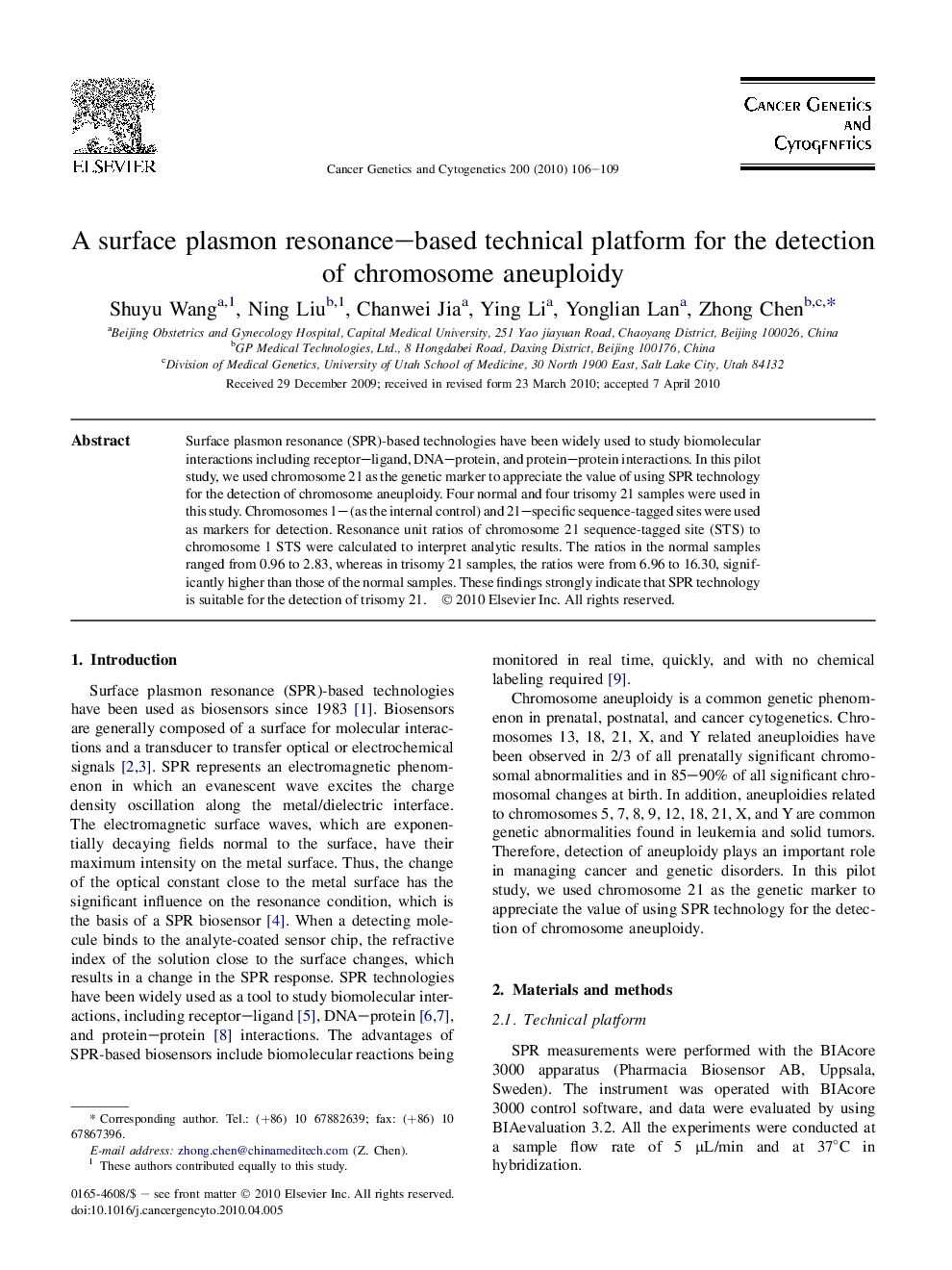| Article ID | Journal | Published Year | Pages | File Type |
|---|---|---|---|---|
| 2110664 | Cancer Genetics and Cytogenetics | 2010 | 4 Pages |
Surface plasmon resonance (SPR)-based technologies have been widely used to study biomolecular interactions including receptor–ligand, DNA–protein, and protein–protein interactions. In this pilot study, we used chromosome 21 as the genetic marker to appreciate the value of using SPR technology for the detection of chromosome aneuploidy. Four normal and four trisomy 21 samples were used in this study. Chromosomes 1– (as the internal control) and 21–specific sequence-tagged sites were used as markers for detection. Resonance unit ratios of chromosome 21 sequence-tagged site (STS) to chromosome 1 STS were calculated to interpret analytic results. The ratios in the normal samples ranged from 0.96 to 2.83, whereas in trisomy 21 samples, the ratios were from 6.96 to 16.30, significantly higher than those of the normal samples. These findings strongly indicate that SPR technology is suitable for the detection of trisomy 21.
